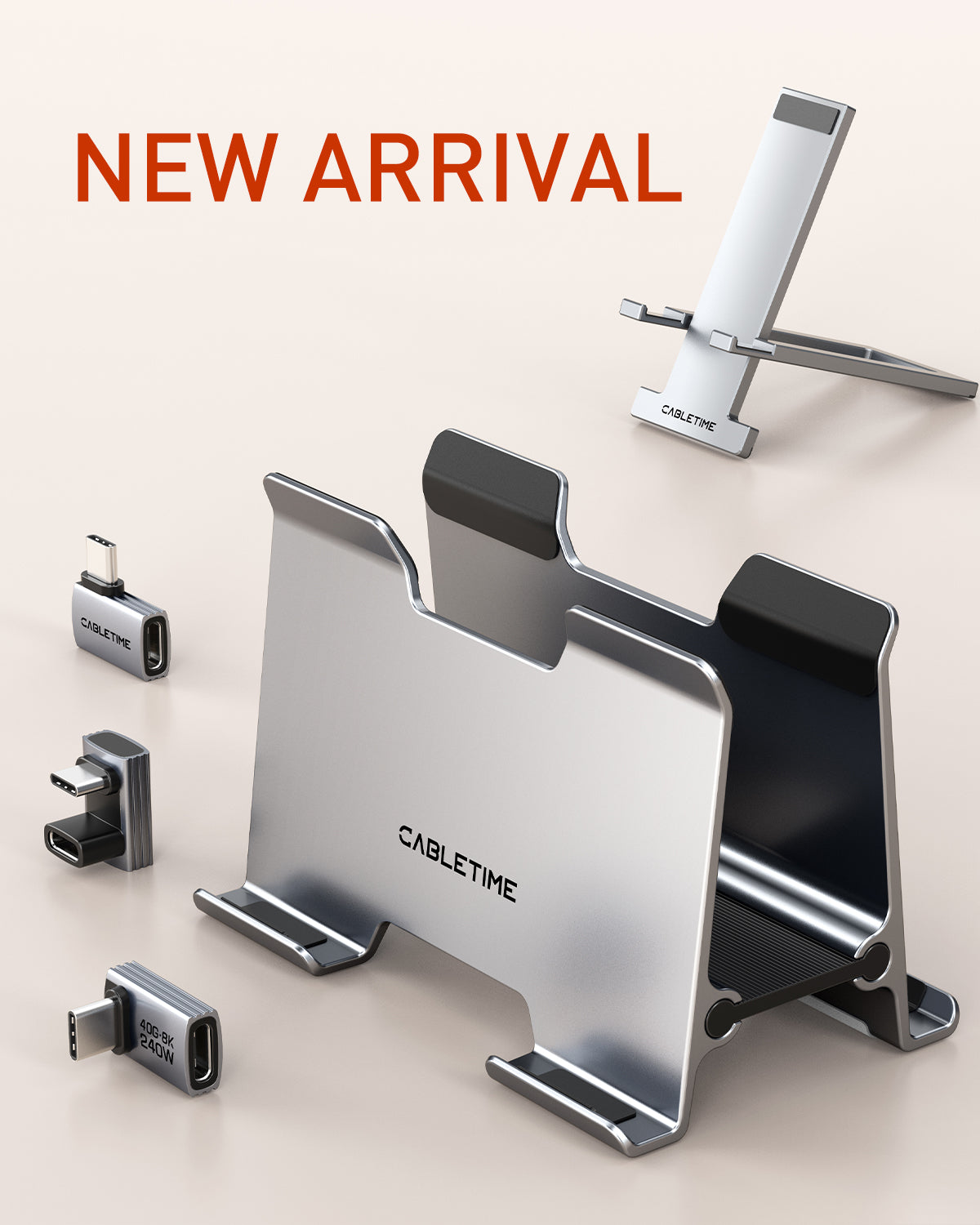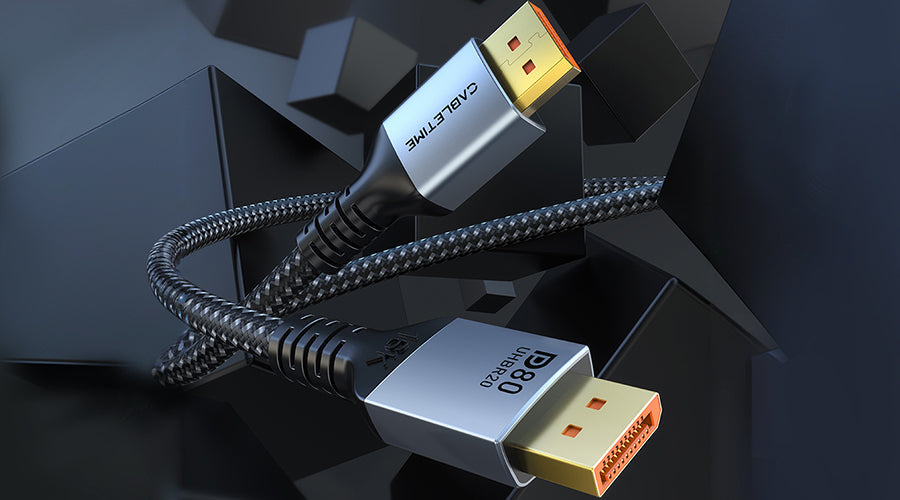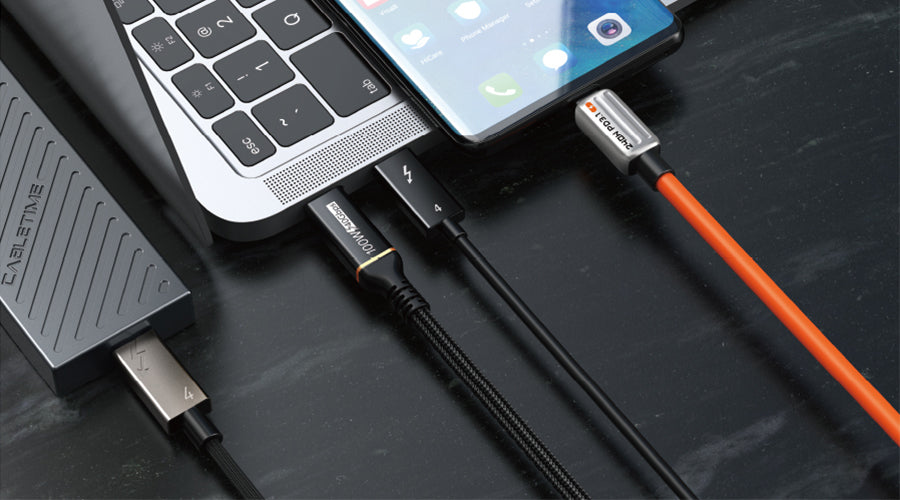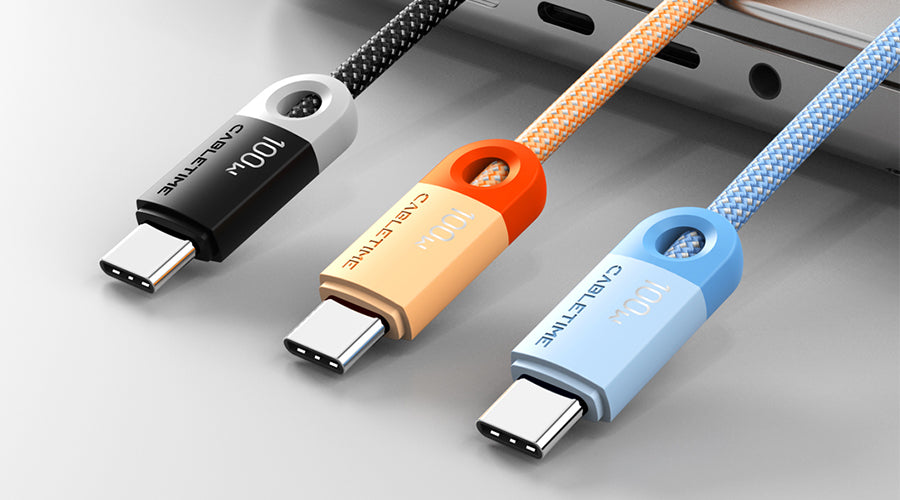Con la creciente popularidad de las pantallas de alta resolución, la capacidad de transmitir audio y video de alta calidad cobra cada vez mayor importancia. DisplayPort, la interfaz de conexión digital de alta velocidad ampliamente utilizada en monitores y computadoras, ofrece un soporte robusto para la transferencia de audio multicanal entre dispositivos.
Tabla de contenido
- 1. Descripción general de la compatibilidad de audio DisplayPort
- 2. Condiciones para la transmisión de audio a través de DisplayPort
- 3. Configuración y solución de problemas de audio DisplayPort
- 4. DisplayPort vs. HDMI: Comparación de características de audio
- 5. Tendencias futuras en audio DisplayPort
- 6. Conclusión
- 7. 5 preguntas relacionadas que los lectores pueden hacer
Descripción general de la compatibilidad de audio DisplayPort
DisplayPort está diseñado no solo para la transmisión de video, sino también para audio digital sin comprimir. Esto permite que una sola conexión DisplayPort realice ambas funciones: ofrecer imágenes nítidas a los monitores y enviar sonido multicanal a altavoces o auriculares.
Se admiten varios formatos de sonido envolvente de alta gama, incluidos:
- Dolby Atmos
- DTS:X
- 1 Sonido envolvente
Esto hace que DisplayPort sea ideal para PCs de juegos y cine en casa, donde se buscan imágenes excelentes y un audio inmersivo. El audio multicanal mejora la experiencia, permitiendo que los sonidos se localicen con precisión para realzar la acción en pantalla.
Por ejemplo, en un juego de disparos en primera persona, escuchar a los enemigos acercarse sigilosamente desde los canales laterales o traseros proporciona una ventaja táctica y aumenta la tensión. Al ver películas de acción, el audio direccional permite a los espectadores sentir que están dentro de secuencias explosivas, ya que los efectos se desplazan de un canal a otro.
Cómo DisplayPort gestiona el audio de alta fidelidad
DisplayPort utiliza un sistema basado en paquetes de alto ancho de banda que proporciona una amplia capacidad para transferir audio sin comprimir sin afectar el rendimiento del video. La interfaz tiene la capacidad de procesamiento necesaria para formatos como Dolby TrueHD y DTS-HD Master Audio, que utilizan codificación sin pérdidas para una fidelidad máxima.
Los canales auxiliares dedicados de DisplayPort se utilizan para transmitir sonido multicanal I2S. Las señales de reloj se integran directamente en los flujos de datos, manteniendo la sincronización perfecta entre el vídeo y el audio. Esto permite una reproducción sin interrupciones incluso con configuraciones de sonido envolvente complejas.

Para una experiencia de audio óptima, las conexiones DisplayPort deben usar cables y conexiones con un blindaje uniforme para evitar interferencias. Las microinterferencias o las caídas temporales de señal pueden provocar chasquidos y clics en la reproducción de audio si las conexiones están sueltas o los cables están defectuosos. Un cableado DisplayPort de alta calidad es fundamental.
Condiciones para la transmisión de audio a través de DisplayPort

El transporte de audio multicanal de alta resolución tiene algunos requisitos básicos al utilizar DisplayPort:
Soporte de hardware
Tanto el dispositivo de origen DisplayPort como el monitor/altavoces receptores deben contar con hardware compatible con audio multicanal a través de DisplayPort. Muchos dispositivos DisplayPort modernos incluyen esta capacidad, pero la funcionalidad puede variar. Siempre revise las especificaciones para asegurarse de que los componentes admitan audio multicanal I2S/PCM sin comprimir.
Por ejemplo, CableTime's Cables DisplayPort mencionan explícitamente el soporte de audio de 8 canales, lo que garantiza su capacidad de transmitir sonido envolvente complejo entre PC, GPU y monitores.
Se requiere la versión DisplayPort
El estándar de interfaz DisplayPort se ha actualizado con el tiempo con nuevas funciones y niveles de ancho de banda:
| Versión | Ancho de banda máximo | Audio multicanal |
| DisplayPort 1.1 | 8,64 Gbps | No |
| DisplayPort 1.2 | 17,28 Gbps | Sí |
| DisplayPort 1.4 | 32,4 Gbps | Sí |
| Displayport 2.1 | 80 Gbps | Sí |

Como se muestra en la tabla, DisplayPort 1.2 y versiones superiores ofrecen el rendimiento suficiente para gestionar simultáneamente señales de vídeo de alta resolución y audio multicanal. La mayoría de los dispositivos DisplayPort modernos cumplen estas especificaciones, pero es recomendable verificar los modelos para garantizar la compatibilidad.
Además, usar un cable DisplayPort certificado de alta calidad, como los que ofrece CableTime, garantiza la compatibilidad con las últimas especificaciones DisplayPort para una transmisión audiovisual impecable. Los cables de baja calidad pueden reducir el rendimiento.
Muchas GPU y monitores de gama alta incorporan ahora puertos DisplayPort 1.4. Si bien la versión 1.4 actualmente ofrece pocas ventajas adicionales para las resoluciones de pantalla, ofrece mayor margen de ancho de banda para adaptarse a los códecs de audio y metadatos más avanzados en el futuro.
Cables DisplayPort 2.1 son compatibles con versiones anteriores de DisplayPort, por lo que comprar 1.4 cables ayudan a preparar la infraestructura para los próximos formatos de audio.

Configuración y solución de problemas de audio DisplayPort
Configurar correctamente el sistema operativo y las aplicaciones es fundamental para enrutar correctamente el audio multicanal a través de DisplayPort. Aquí encontrará información sobre cómo habilitar y probar el audio DisplayPort en Windows y macOS.
Configuración de audio DisplayPort de Windows
- Abrir configuración de sonido
- En Salida, seleccione el dispositivo DisplayPort
- Pruebe el audio multicanal utilizando los íconos de configuración de los altavoces
Si Windows emite audio a través de otra conexión en lugar de DisplayPort, verifique lo siguiente:
- Activa o desactiva el dispositivo DisaplyPort como salida predeterminada
- Actualice los controladores de audio del fabricante de la GPU/dispositivo
- Utilice la configuración de sonido nativa del dispositivo en lugar del sonido espacial
También intente ajustar la frecuencia de muestreo, la profundidad de bits y las opciones de formato para que coincidan con las capacidades del equipo a lo largo de la ruta de audio. Una configuración incorrecta entre los componentes puede impedir la correcta reproducción del sonido multicanal.
Configuración de audio DisplayPort de macOS
- Vaya al Menú Apple > Preferencias del Sistema
- Haga clic en el icono de sonido
- Seleccione el dispositivo DisplayPort en la pestaña Salida
- Haga clic en el botón Configurar altavoces
- Pruebe diferentes diseños de altavoces multicanal
En macOS, si hay problemas de audio DisplayPort, prueba lo siguiente:
- Cómo alternar diferentes frecuencias de muestreo en la configuración de audio MIDI
- Reconexión de la conexión del cable DisplayPort
- Usar un puerto DisplayPort diferente en la GPU o el monitor
macOS incluye herramientas robustas para ajustar la velocidad de bits, la disposición de los canales y la configuración del reloj para estabilizar las transmisiones multimedia DisplayPort. Pruebe a usar frecuencias de muestreo o profundidades más altas si surgen problemas de calidad.
En las configuraciones de cine en casa, los receptores AV pueden proporcionar las opciones de configuración de audio en lugar del sistema operativo. Consulte la documentación del receptor para asignar correctamente las pantallas y los dispositivos multimedia a los altavoces físicos.
DisplayPort vs. HDMI: Comparación de características de audio

HDMI es la interfaz más reconocida para conectividad audiovisual. ¿Cómo se compara con DisplayPort para audio?
Compatibilidad con formatos de audio
Tanto HDMI como DisplayPort admiten formatos comprimidos comunes, como Dolby Digital estándar y sonido envolvente DTS. Sin embargo, el mayor ancho de banda de DisplayPort permite la transferencia de opciones multicanal más avanzadas, como:
- Dolby Atmos
- DTS:X
- Dolby TrueHD
- Audio maestro DTS-HD
Estas tecnologías de sonido inmersivo se utilizan con frecuencia en sistemas de cine en casa. DisplayPort está mejor equipado para transmitirlas intactas y que los receptores AV las decodifiquen.
HDMI 2.1 ha aumentado recientemente el rendimiento disponible para competir con DisplayPort 1.4, por lo que ahora también admite formatos mejorados como Dolby Atmos. Tanto HDMI como DisplayPort admiten audio sin comprimir, pero HDMI suele asociarse con formatos comprimidos en el uso real, mientras que DisplayPort se centra más en ofrecer sonido de alta calidad y sin pérdidas.
Calidad de audio
HDMI admite audio comprimido para una transmisión eficiente, aunque la degradación de la señal puede afectar la calidad. DisplayPort utiliza formatos de audio sin pérdidas para preservar la fidelidad del sonido reproducido en altavoces y auriculares.
El audio sin comprimir requiere mucho más ancho de banda, por lo que HDMI aún favorece cierta compresión incluso en niveles de especificaciones más altos.La interfaz basada en paquetes de DisplayPort admite más fácilmente transmisiones sin comprimir.
Protección de copia
Tanto HDMI como DisplayPort admiten HDCP (protección de contenido digital de alto ancho de banda) para reproducir medios protegidos, pero HDMI se utiliza con más frecuencia para proteger contenido comercial.
La desventaja es que el fuerte DRM de HDMI hace que los estudios cinematográficos lo prefieran para su distribución, mientras que DisplayPort favorece la flexibilidad y la calidad por sobre la protección de los derechos.
Aplicabilidad
Ambas interfaces son ampliamente compatibles con monitores, televisores, tarjetas gráficas y dispositivos multimedia. La capacidad de DisplayPort para manejar pantallas de alta resolución con frecuencias de actualización más rápidas lo hace especialmente atractivo para juegos y PC. HDMI goza de una mayor adopción en el cine en casa, ya que conecta fácilmente componentes AV.
Los fabricantes casi siempre incluyen conectividad HDMI y DisplayPort en sus GPU, pantallas y receptores premium para garantizar la compatibilidad. El uso de adaptadores de conversión, cuando sea necesario, puede solucionar las deficiencias de conectividad entre los equipos HDMI y DisplayPort.
En definitiva, ambos estándares tienen sus ventajas. La elección entre DisplayPort o HDMI depende de las prioridades del caso de uso, como la compatibilidad con pantallas, la calidad del audio, la protección del contenido y la integración con el ecosistema de dispositivos.

Tendencias futuras en audio DisplayPort
DisplayPort continúa evolucionando rápidamente para adaptarse a las resoluciones de pantalla, frecuencias de actualización y formatos de audio de última generación. ¿Qué nos depara el futuro para un sonido aún más avanzado a través de conexiones DisplayPort?
Compatibilidad con metadatos HDR dinámicos
El video HDR emergente requiere metadatos HDR para que las pantallas reproduzcan correctamente colores vivos y un contraste rico. El sistema basado en paquetes de DisplayPort podría incorporar metadatos de audio mejorados en el futuro, de modo que las señales de audio se optimicen según la información de video HDR de DisplayPort.
Por ejemplo, los metadatos podrían dirigir el audio multicanal para intensificar ciertos efectos durante imágenes HDR vívidas, o escalar los canales envolventes sutilmente para que coincidan con elementos brillantes y oscuros de la imagen.
Integración de audio basada en objetos
Las plataformas de sonido envolvente basadas en objetos utilizan elementos de audio discretos que pueden localizarse y moverse en el espacio 3D, lo que permite experiencias más inmersivas. DisplayPort sienta las bases para avanzar hacia la gestión de estos complejos formatos basados en objetos.
Al rastrear cada objeto generador de sonido como puntos de datos distintos, el audio basado en objetos alcanza nuevos niveles de realismo. Si bien HDMI es actualmente la principal opción para formatos de audio basados en objetos como Dolby Atmos y DTS, la interfaz flexible de DisplayPort tiene el potencial de admitir tecnologías similares a medida que continúa desarrollándose.
Mejoras en el ancho de banda y la compresión
DisplayPort 2.0, próximamente, aumenta el ancho de banda disponible a 77,4 Gbps. Combinado con técnicas optimizadas de reducción de la tasa de bits, la nueva generación de DisplayPort ofrece versiones sin pérdidas del audio espacial más avanzado disponible.
DisplayPort 2.0 ofrecerá un rendimiento consistente y confiable con una resolución de video de hasta 16K, junto con la expansión de los requisitos de audio. Un mayor ancho de banda permite a DisplayPort transmitir formatos de audio de alta calidad y con un gran número de canales.
A medida que el contenido de medios y juegos continúa madurando, se puede esperar que la especificación DisplayPort crezca a la par, otorgando a los usuarios acceso a combinaciones de fidelidad de vanguardia de imágenes de alta resolución y paisajes sonoros multidimensionales envolventes.
Rediseños de conectores
Las iteraciones actualizadas del conector DisplayPort apuntan a ocupar menos espacio y al mismo tiempo brindar una conectividad sólida.Los puertos DisplayPort menos engorrosos alivian los problemas de congestión de la interfaz.
La integración de Thunderbolt combina múltiples puertos manteniendo la intensidad de las señales audiovisuales. Sin embargo, DisplayPort y HDMI siguen siendo importantes, especialmente para equipos como cine en casa y electrónica de consumo.
Conclusión
Sí, DisplayPort incluye un soporte sólido y dedicado para la transmisión de audio digital multicanal. Los formatos sin comprimir permiten transferir sonido envolvente inmersivo sin problemas entre tarjetas de vídeo, monitores y equipos de audio modernos mediante cables DisplayPort estándar.
Comprender las capacidades de DisplayPort puede ayudar a crear configuraciones de escritorio, juegos y cine en casa que combinen una fidelidad visual sorprendente con una reproducción de sonido de alta resolución igualmente impresionante.
El futuro de DisplayPort se presenta prometedor, tanto para imágenes con velocidades de fotogramas vertiginosas como para paisajes sonoros con una precisión espacial milimétrica. Aproveche al máximo los monitores y tarjetas gráficas con conectividad DisplayPort para disfrutar de presentaciones audiovisuales sensacionales hoy y, al mismo tiempo, prepararse para los avances del futuro.
5 preguntas relacionadas que los lectores pueden hacer
¿Puedo usar DisplayPort para audio y vídeo simultáneamente?
Sí, DisplayPort transfiere ambas señales simultáneamente a través de un solo cable.
¿DisplayPort admite formatos de audio con sonido envolvente?
Admite estándares comunes como Dolby Digital y DTS. DisplayPort 1.2+ también admite formatos avanzados como Dolby Atmos.
¿Cómo cambio la salida de audio a DisplayPort en mi computadora?
Windows y macOS tienen configuraciones de sonido para seleccionar la salida de audio DisplayPort.
¿Qué debo hacer si DisplayPort no transmite audio?
Verifique las conexiones del cable, la configuración de audio del sistema operativo, actualice los controladores del dispositivo y pruebe diferentes puertos.
¿Existe una diferencia en la calidad de audio entre HDMI y DisplayPort?
DisplayPort ofrece calidad sin pérdida y sin comprimir, mientras que el audio HDMI suele estar comprimido.






Deja un comentario
Este sitio está protegido por hCaptcha y se aplican la Política de privacidad de hCaptcha y los Términos del servicio.